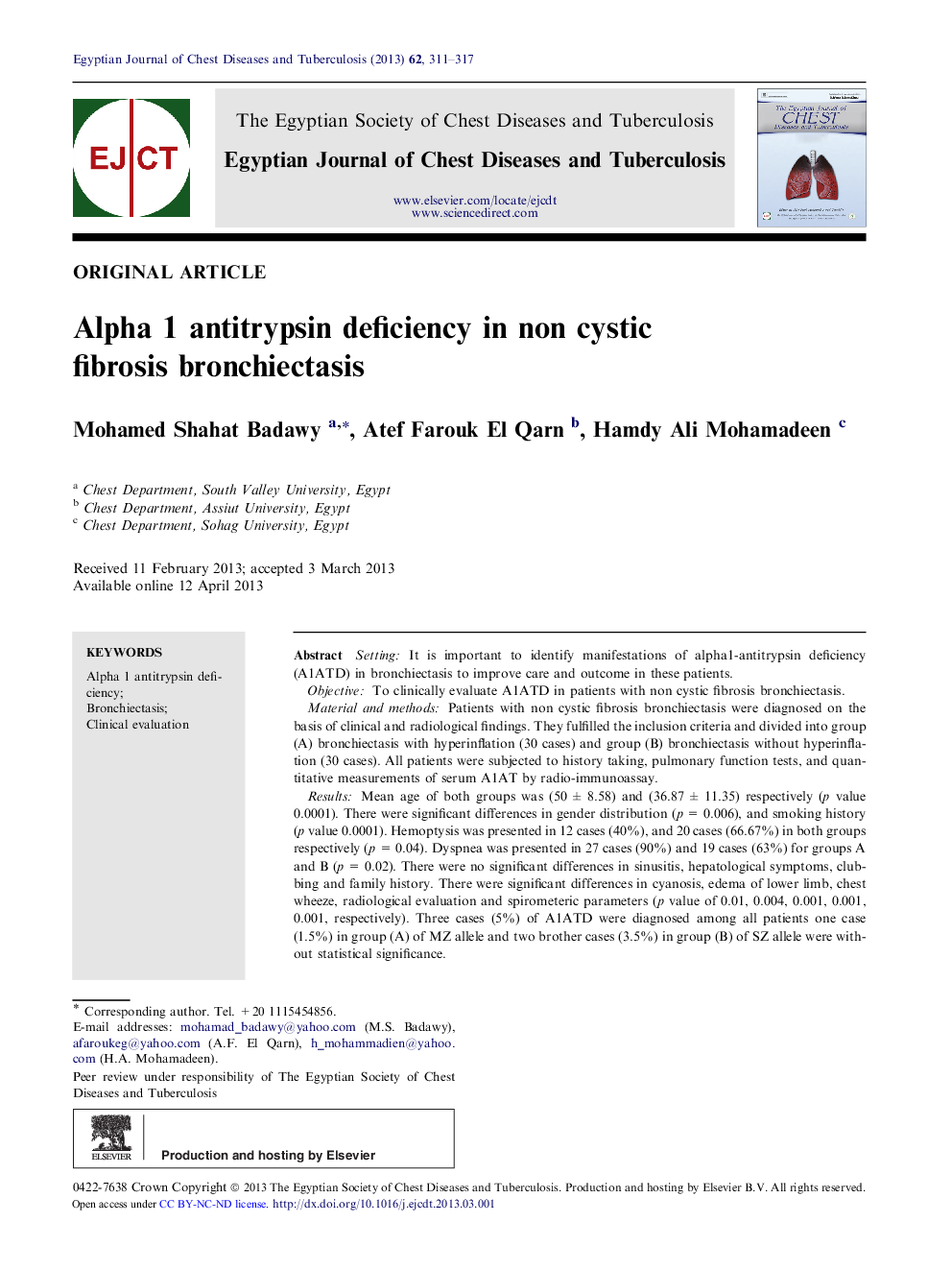| Article ID | Journal | Published Year | Pages | File Type |
|---|---|---|---|---|
| 3400064 | Egyptian Journal of Chest Diseases and Tuberculosis | 2013 | 7 Pages |
SettingIt is important to identify manifestations of alpha1-antitrypsin deficiency (A1ATD) in bronchiectasis to improve care and outcome in these patients.ObjectiveTo clinically evaluate A1ATD in patients with non cystic fibrosis bronchiectasis.Material and methodsPatients with non cystic fibrosis bronchiectasis were diagnosed on the basis of clinical and radiological findings. They fulfilled the inclusion criteria and divided into group (A) bronchiectasis with hyperinflation (30 cases) and group (B) bronchiectasis without hyperinflation (30 cases). All patients were subjected to history taking, pulmonary function tests, and quantitative measurements of serum A1AT by radio-immunoassay.ResultsMean age of both groups was (50 ± 8.58) and (36.87 ± 11.35) respectively (p value 0.0001). There were significant differences in gender distribution (p = 0.006), and smoking history (p value 0.0001). Hemoptysis was presented in 12 cases (40%), and 20 cases (66.67%) in both groups respectively (p = 0.04). Dyspnea was presented in 27 cases (90%) and 19 cases (63%) for groups A and B (p = 0.02). There were no significant differences in sinusitis, hepatological symptoms, clubbing and family history. There were significant differences in cyanosis, edema of lower limb, chest wheeze, radiological evaluation and spirometeric parameters (p value of 0.01, 0.004, 0.001, 0.001, 0.001, respectively). Three cases (5%) of A1ATD were diagnosed among all patients one case (1.5%) in group (A) of MZ allele and two brother cases (3.5%) in group (B) of SZ allele were without statistical significance.ConclusionA1ATD can be found in patients with bronchiectasis with or without concomitant hyperinflation. Inheritance could influence an individual’s risk of A1ATD for developing bronchiectasis.
